We write all kinds of things for all kinds of brands, but it’s burgers and rosemary salted chips that got us thinking. Since we worked on this project for Honest Burgers, we haven’t looked at fields in the same way. We now play ‘Industrial Farming I Spy’ – and it’s everywhere.
Honest Burgers are changing everything about how they source their meat. They’re not just namedropping a farm or two on a chalkboard – they’re completely changing the farms they work with and the fields the cows graze on, right down to the soil. For a company that makes burgers in 40+ restaurants it’s a big deal. So Honest asked us to sum up everything they’re doing.
There’s a name for all this: regenerative farming. It doesn’t roll off the tongue – it’s a subject with a language of its own – and it doesn’t help that people have different takes on it too.
But by far the biggest challenge Honest are up against is greenwash. When you can buy “carbon neutral falafel” in the supermarket and there are “carbon positive” stickers on menus in restaurant chains, it’s hard to show what Honest are doing is genuinely different.
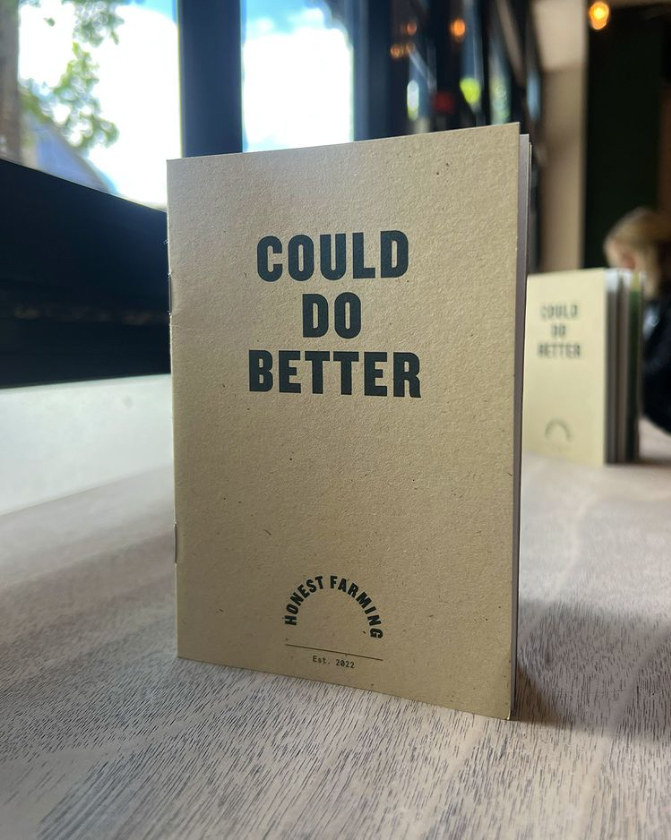
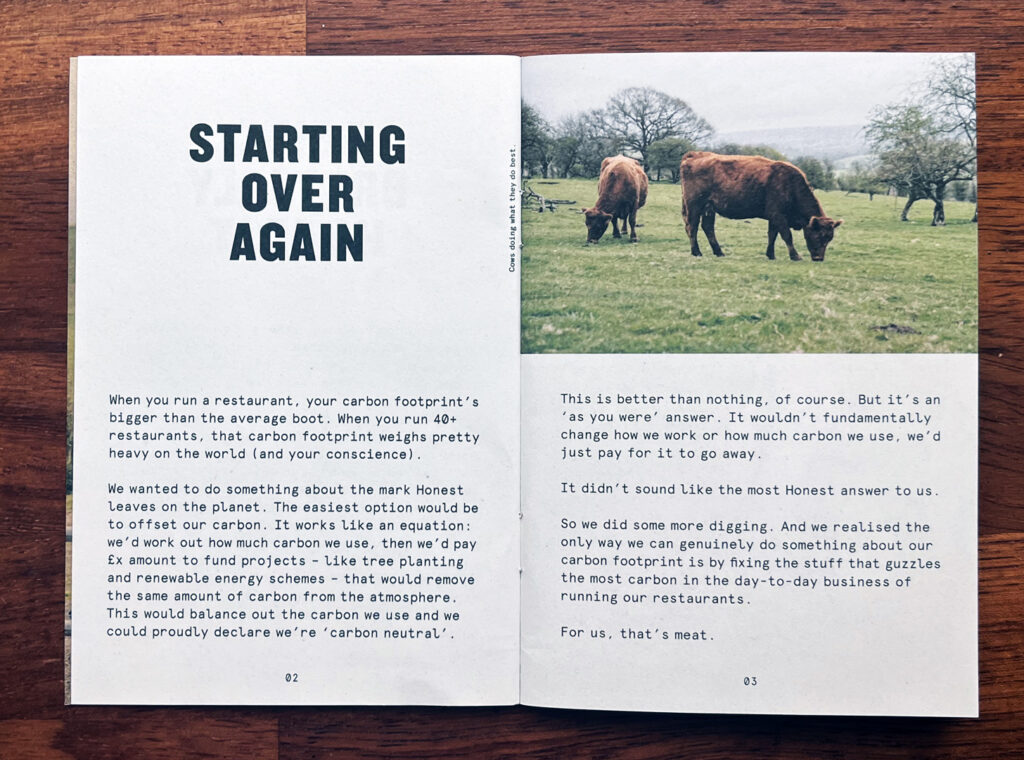
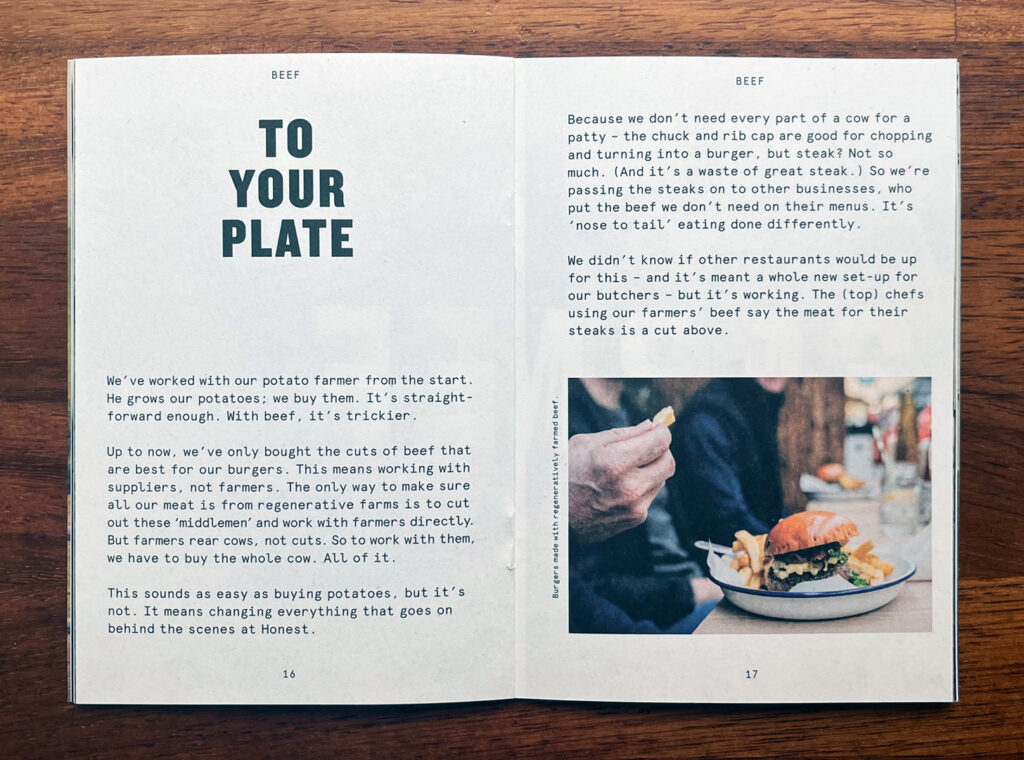
picture. We always brought it back to Honest.
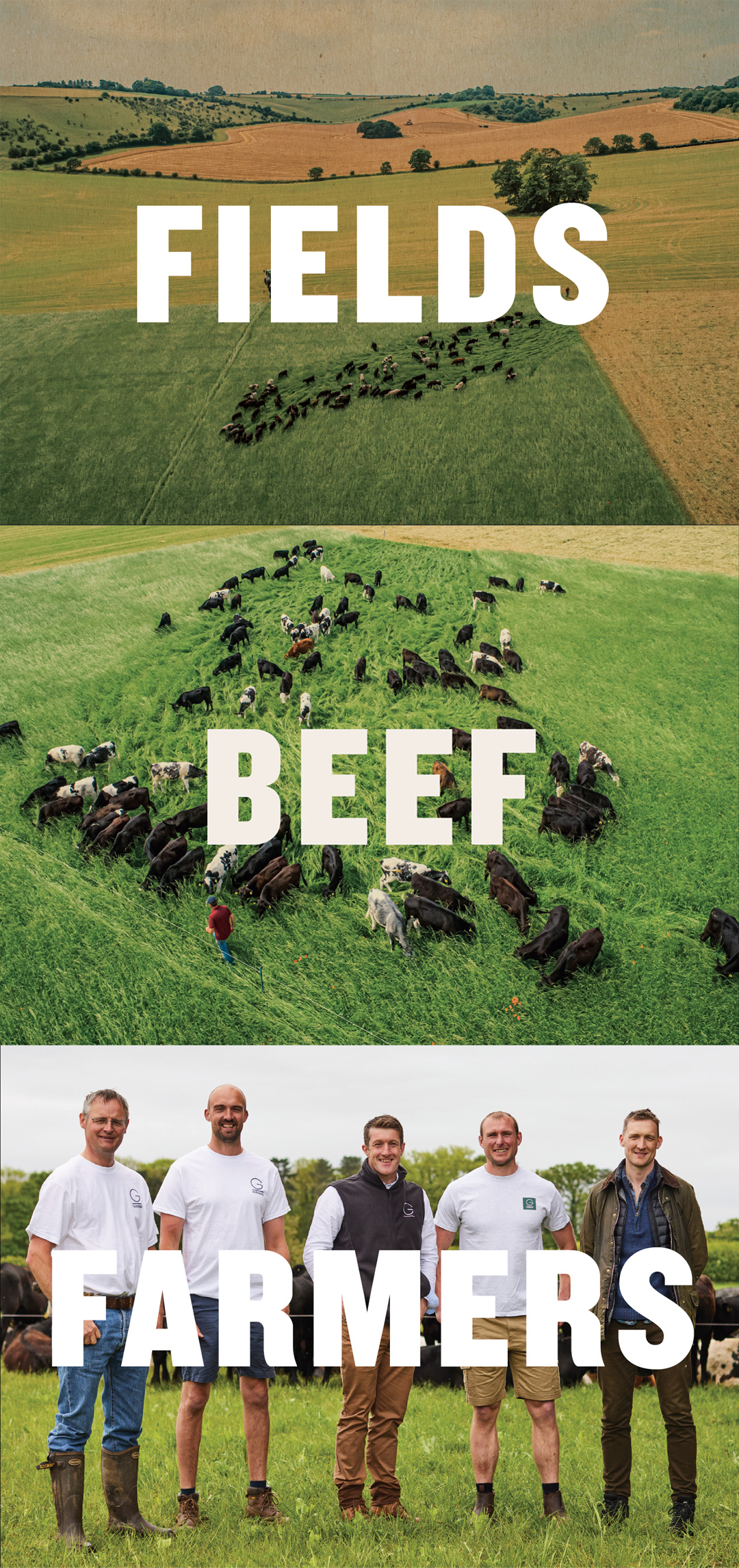
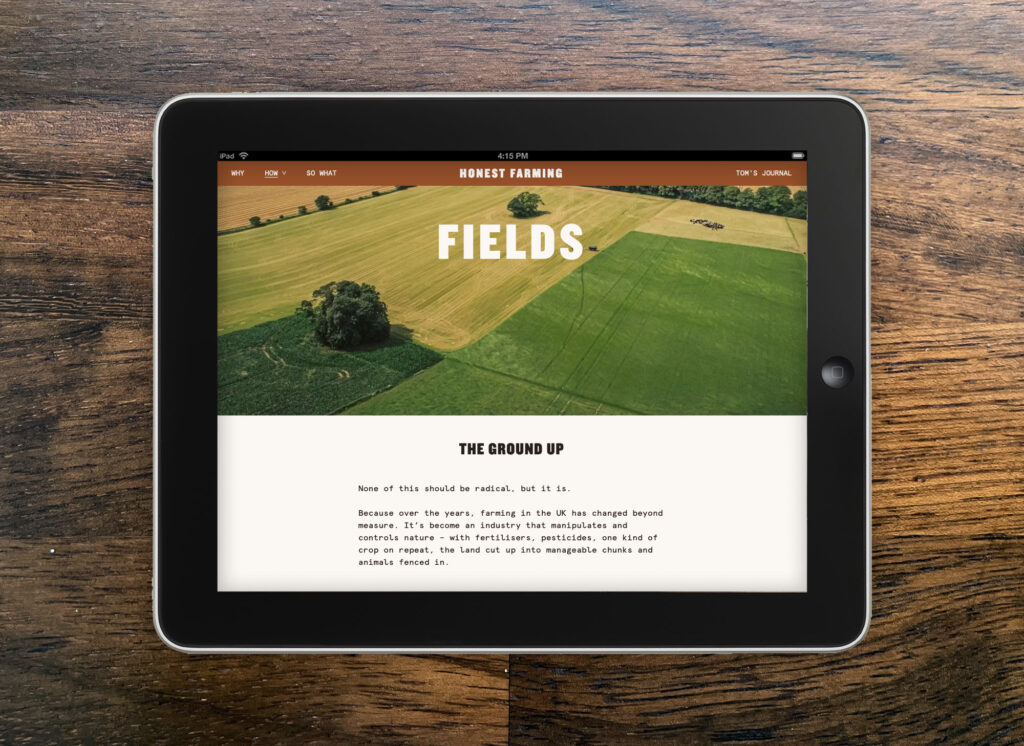
This is the second book we’ve written for Honest. For this one, we also put together a style guide with tips about how to keep writing about Honest Farming. Farming has its own language (“ruminants” are cows and sheep to you and me). As does sustainability (“emitting and sequestering carbon”) and restaurants (“supply chains”, “operations” and so on). You won’t find those words here.
Above all, the biggest thing we’ve been working with Honest on is how to make sure this doesn’t sound like another case of a brand talking themselves up and overclaiming things. “Carbon neutral” is the easier snappier, sell – most people get it these days. But what Honest are doing is more fundamental than that. It has the potential to properly change how restaurants – especially big brands in lots of places – source food for good.
You can read our book in an Honest near you or keep up with what they’re doing on the Honest Farming website.
The book was designed by Connie Barton at Studio Connie.
